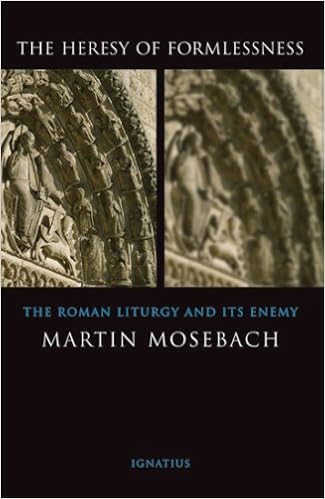 The Heresy of Formlessness: The Roman Liturgy and Its Enemy by Martin Mosebach, translated by Graham Harrison, 209 pages
The Heresy of Formlessness: The Roman Liturgy and Its Enemy by Martin Mosebach, translated by Graham Harrison, 209 pages
Martin Mosebach freely confesses that progress has passed him by. He has not learned that words are meaningless, that truth is nothing but a bigoted opinion, or that beauty is entirely in the eye of the beholder. He still clings to antiquated prejudices - that religion ought to connect man to a higher reality, that the best of what has been thought and done in past ages can never be irrelevant, that no one can consume trash and expect to remain healthy. Most indicative of his backwardness is his belief that human beings are both soul and body, and that therefore what we believe and what we do are interconnected.
In the wake of the Second Vatican Council, a new wave of iconoclasm swept through the Catholic Church. Great artworks which had stood the test of time were replaced with up-to-date substitutes which were obsolete the day after they appeared. Even kitschy works that, though undeniably second rate, were popular with the average Catholic were replaced, when they were replaced at all, with pieces that allegedly spoke to modern sensibilities, but which pleased few beyond the artists who were paid to produce them and their clerical patrons who paid dearly for the pleasure of believing they were with-it. Simultaneously, an elaborate language of ritual and gesture which had developed over the course of millennia was simply abandoned. The iconoclasts claimed that all of this was distracting and unnecessary, modern man having outgrown the need for symbols, beauty, and supernatural hope.
In The Heresy of Formlessness Mosebach makes the case that the iconoclasts were wrong. The nature of man, he contends, has not changed since the Stone Age. We still live and die by symbols, still crave beauty, are still bound together - to the extent we are bound together at all - by rituals both civic and religious. As a novelist by trade, his arguments are affective rather than logical, his investigations personal rather than philosophical or theological. Ironically, this makes his book somewhat formless - the final essay, tacked on in the third edition, while cromulent in itself, greatly diminishes the power of the conclusion by its placement.
No comments:
Post a Comment